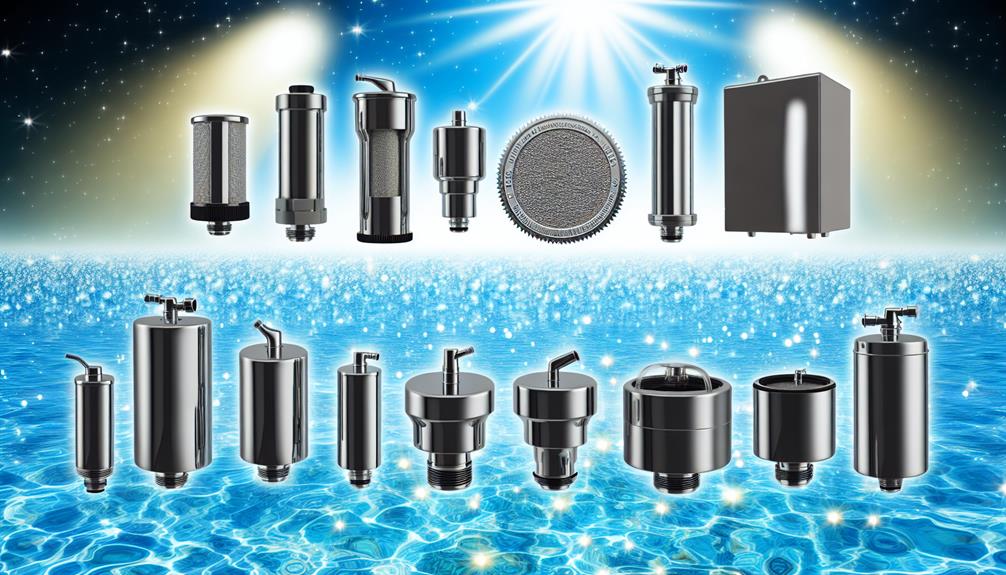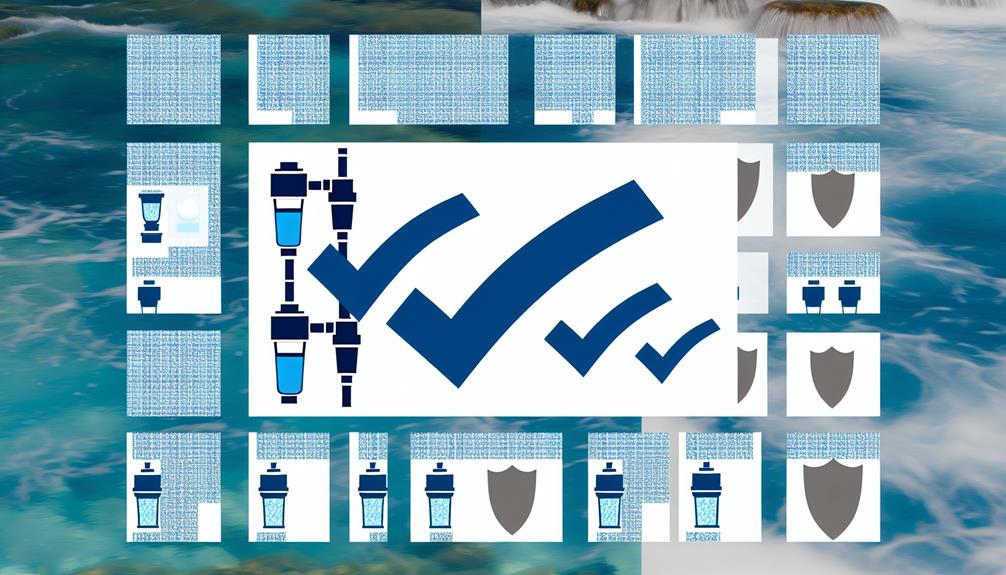Imagine you're at the helm of a facility that's just installed a state-of-the-art industrial water filtration system. You've invested heavily, not only in the technology itself but also in the promise of operational efficiency and regulatory compliance it brings.
Yet, as you scan the labyrinth of guidelines—from permissible contaminant levels to intricate discharge standards—you realize that staying compliant is a dynamic challenge, not a one-time checkbox. You're tasked with grasping the nuances of the regulatory framework, which is as crucial as the mechanical performance of your filters.
You must also ensure that your team is trained and ready to respond to the ever-tightening environmental standards. This is more than a matter of following a rulebook; it's about safeguarding the integrity of your operations and the environment.
As you consider the complexities ahead, you recognize that the journey to compliance is ongoing, and the strategies you deploy today will define your success tomorrow.
Understanding Regulatory Framework
Grasping the complex web of federal, state, and local regulations is key to ensuring your industrial water filtration systems meet all safety compliance standards. You must delve into the intricacies of regulatory requirements set forth by the Environmental Protection Agency (EPA) and adhere to National Standards for Water. These dictate the purity levels for public drinking water and establish water filtration standards that your operations must uphold.
Staying abreast of the regulatory landscape prevents you from being overwhelmed by an excess of paperwork and the challenge of keeping current with regulatory updates. It's not just about meeting the minimum threshold; it's about ensuring the Safe Drinking Water Act's provisions are integrated into your systems and processes.
You'll need to invest in compliance training that targets the specifics of industrial water regulations. This training will equip you with the knowledge to navigate through the regulatory maze and streamline your water purification processes, ultimately saving you time and resources.
Maintaining regulatory compliance isn't a one-off task; it's a continuous journey that demands diligence and an ongoing commitment to standards. Your proactive approach to understanding and compliance with regulatory standards ensures the safety of the water you produce and contributes to the health and well-being of the community.
Identifying Compliance Criteria
Before diving into the specifics of your industrial water filter system, it's essential to pinpoint the exact compliance criteria set by various regulatory bodies. Understanding these specific requirements is crucial for ensuring compliance and protecting public water quality. Here are key steps to identify these criteria:
- Review federal guidelines, particularly those set by the Environmental Protection Agency (EPA), which govern standards for drinking water and contaminants.
- Examine state and local regulations that may impose additional or more stringent standards, especially for discharged substances and their impact on local ecosystems.
- Consult industry-specific guidance documents that offer tailored advice for meeting regulatory demands within your industrial processes.
- Engage with regulatory bodies and participate in professional networks to stay updated on evolving regulations and best practices.
Meeting regulatory standards isn't just a matter of ticking boxes; it's about maintaining the water quality that's essential for public health and the environment. Regularly monitor the levels of contaminants and ensure your discharges are within acceptable ranges.
Keep in mind that regulations aren't static; they evolve as new information becomes available. Therefore, staying informed and prepared to adjust your practices is key to successfully navigating industrial water filter safety compliance.
Implementing Monitoring Systems
Having established the compliance criteria, it's crucial to implement water quality monitoring systems that are accurately calibrated and feature remote monitoring capabilities to ensure ongoing compliance and system integrity. You need to ensure the precise execution of sensor calibration processes to maintain the reliability of your monitoring systems within the industrial water filtration landscape. This is especially important when dealing with water filtration standards that impact drinking water treatment and Water Purification.
Incorporate data analysis software that can adeptly interpret the information collected. This software is key in understanding the performance of your filtration products, including membranes and reverse osmosis systems, as they tackle contaminants such as heavy metals. The robust remote monitoring capability you implement will offer comprehensive oversight, ensuring regulatory adherence and addressing any deviations in real-time.
Moreover, it's essential to consider data security measures to protect sensitive information from potential breaches. As you navigate the specifics of Water Filtration Systems, remember that each component must align with the specific needs of your facility and the stringent water purification requirements. Ensuring regulatory compliance isn't just about meeting benchmarks—it's about consistently safeguarding the quality of water and the health of those who rely on it.
Conducting Regular Testing
To ensure adherence to water quality regulations, it's essential to conduct regular testing that monitors the levels of substances being discharged from your industrial water filtration system. This vigilance is crucial not only for compliance but also to maintain the integrity of water supplies, whether for industrial use or eventually for drinking.
Here are steps you should consider:
- Implement real-time monitoring systems to promptly identify and address water quality issues.
- Train your staff rigorously on water filtration standards and the importance of quality control in reducing contaminants.
- Document all compliance measures and any corrective actions taken in response to non-compliance, ensuring a clear audit trail.
- Stay updated on Environmental Protection Agency (EPA) guidelines and adapt your various filtration strategies, including the selection of filter media, to meet regulatory demands.
Training and Documentation
While ensuring regular testing is crucial for water quality compliance, equally important is the rigorous training and meticulous documentation of your staff's adherence to safety protocols. You must maintain comprehensive records of compliance training for your team members—this isn't just a best practice; it's a necessity to meet the Environmental Protection Agency's standards. Regularly update and review training materials to ensure they reflect current regulations and industry best practices.
Your training program should cover the entire spectrum of water filtration systems operation, from handling cartridge filters to understanding material safety related to Industrial Water systems. It's imperative to educate your staff on the Quality requirements set forth by the Water Act and other regulatory frameworks. Provide detailed training on safety protocols, equipment operation, and emergency response to ensure compliance at all levels.
Implement a robust digital system for storing and accessing training records and compliance certifications. It streamlines the process and demonstrates your commitment to regulatory awareness. Additionally, encourage your team's participation in industry-specific workshops and webinars. Staying updated on regulatory changes is critical in navigating the evolving landscape of water filtration standards and maintaining water quality compliance.

